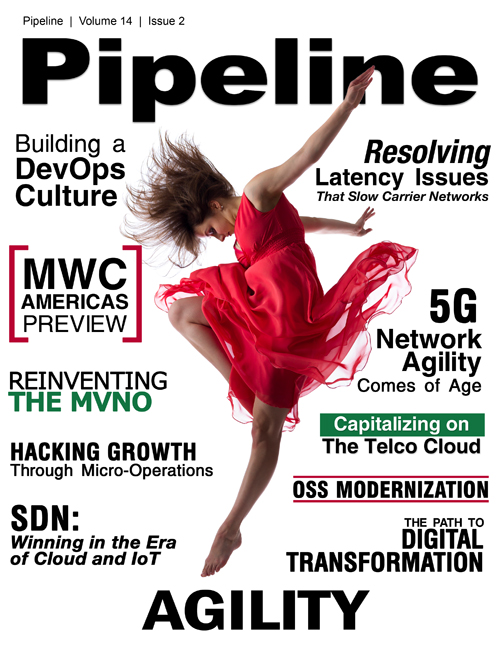5G: Network Agility Comes of Age
Multipoint-to-Multipoint Changes Network Dynamics
5G is expected to generate a dramatic increase in capacity demand, which will put a strain on limited spectrum resources. However, that strain is mitigated when the radio resources of a network are virtualized. Because the fronthaul and routing of the digital radio signals are now defined in software, signals can be routed intelligently and dynamically. Whereas traditional networks are limited by the hardwired point-to-point architecture of their radio distribution components, the innovative software-defined radio routing architecture makes it possible for the virtual distribution network to function as a virtual multipoint-to-multipoint distribution network. This eliminates the need for overprovisioning to meet peak demand, as network resource are allocated dynamically where needed and when needed.
This fundamental change is the foundation for dramatic increases in network efficiency and bandwidth management, in managing the Quality of Service (QoS) and hence, the user experience, which is critically important for driving revenues and customer retention. This change is also a critical enabler of network slicing.
The Network Slicing Alternative
Perhaps one of the most exciting developments in anticipation of 5G is that of dynamic network slicing. Only possible when a network is fully virtualized, network slicing effectively "slices" the application layer of the virtual network to create multiple application layers. Each new layer can then be configured independently of the others to provide different levels of performance, spectrum, latency and power, as required for its own specific service or use-case i.e. for IoT, RFID, cellular; and is managed dynamically based on analytics.
While a proliferation of IoT devices, such as connected homes and inventory tracking systems require network service, they do not require the millisecond latency and ultra-high level of reliability necessary for self-driving vehicles or other mission critical IoT. Likewise, neither is expected to require the massive data rates needed for video streaming and immersive technologies.
By implementing network slicing, an operator can effectively address widely varying application requirements without prohibitively expensive options, such as having to build a single network that meets all of the most extreme application criteria, or deploying multiple independent physical networks.

Fig. 3 - Network Slicing
Within network slicing, as shown above, the unique capability of the virtual network’s Fronthaul Interface to dynamically allocate spectrum also presents new opportunity for operators in terms of business models. Slices can be designed as different service tiers, each with its own suitable charging model. Capacity can also be shifted for a specific period of time to accommodate large events or other high-demand situations, and sold as such. Operators also have the ability to provide different data rates to different enterprise customers, for example, and to charge accordingly. In other words, network slicing provides operators with an innovative and cost-effective means of delivering a breadth of services.
Evolving Networks for 5G
From a network perspective, 5G represents a 1000x increase in capacity, significantly higher data rates and signal quality, as well as lower latency — all far beyond what traditional fixed point-to-point networks could provide. At the same time, 5G invites increased complexity and service fragmentation, and a proliferation of new applications and use cases, each of which will represent highly diverse requirements in terms of spectrum, bandwidth, latency, and power. This will make implementation of 5G a challenge in terms of designing and deploying comprehensive and adequate 5G network solutions.
Network slicing offers a compelling long term approach for 5G deployment with a level of flexibility that operators have not seen before. As operators work towards 5G, they can gain significant benefits when transitioning to virtualized networks that interoperate with existing legacy equipment: increased efficiency and cost savings, improved network resource management, and the flexibility, elasticity and scalability that comes with software-configurable resources.



















